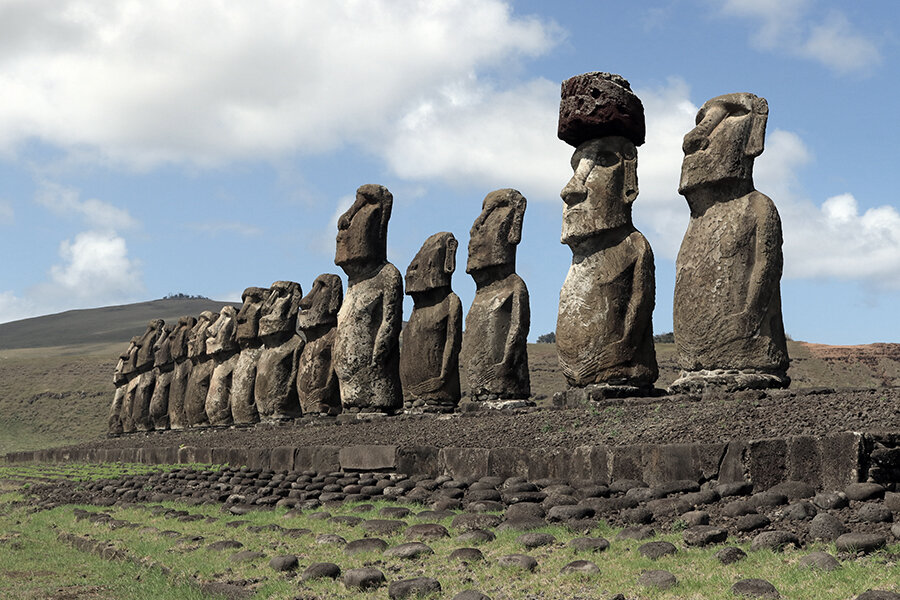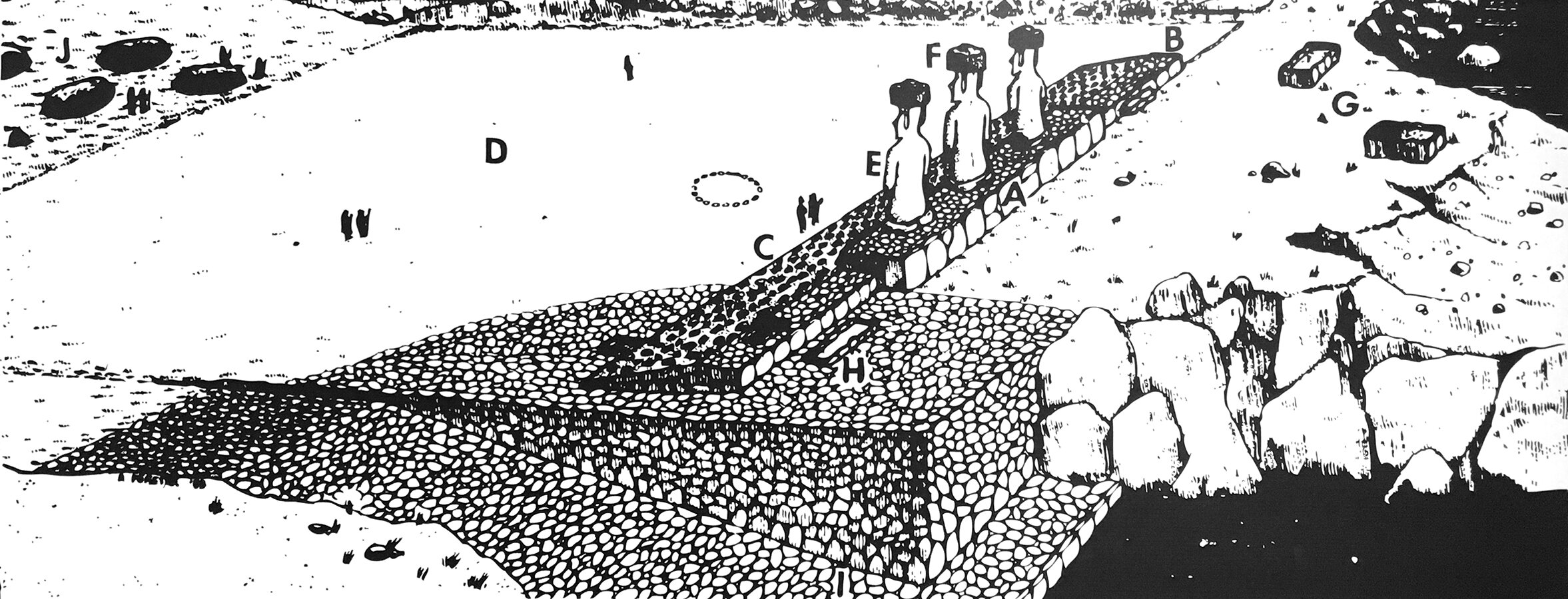The Moai of Easter Island
Ahu and Moai at Tongariki, Easter Island. The Moai represented past kings of a village who were buried below each statue.
Easter Island is known the world over for its famous Moai statues, carved by the indigenous Rapa Nui people between 1250 and 1500. These statues have become iconic over the years, and most everyone has seen photos of them. A closer look at their design progression over time reveals a fascinating story, however. The Moai have a mysterious quality to them, partly because their story is one we don't have all the answers to. For instance, we don't know why all the statues were knocked over sometime in the 19th century (the ones standing today have all been restored). An intriguing question with many theories, but for our purposes here we’ll focus on the statues themselves and the design of their sites, which both exhibit verticality.
The Moai represent past kings of the Rapa Nui people. The statues were placed on ahu, or raised platforms, that served as a grave site for these kings. Each time a king died, the village would commission a Moai to be carved for him from Rano Raraku, a volcanic crater and quarry where all the Moai were carved. When completed, the statue would be transported from the quarry to the village and placed on the ahu directly over the grave. On the ahu, each king would be buried next to the previous one, which resulted in a linear arrangement that would grow over time. The longest arrangement was Ahu Tongariki, with 15, but most ahu only had one Moai. Another part of the mystery is how the Rapa Nui transported the sculptures around the island and stood them up on the ahu. This was a major undertaking due to their size and the fragility of the volcanic stone they were carved from. Various theories exist as to the methods involved, but we have no clear answers.
The ahu and its surroundings were considered sacred ground for the village. The Moai were at the rear of this sacred ground and faced the village in order to protect and watch over the villagers. The most important residents of each village lived closest to the ahu on the edge of a large open space reserved for rituals and special occasions. The image below shows a typical ahu and village.
Drawing of a typical Ahu. The platform containing the graves was raised above the surface, and the Moai were placed atop the graves to symbolize the king buried there. The raising up of the graves signifies their importance to the village. Image from the Museo Rapa Nui in Hanga Roa.
The design of the ahu utilized verticality to show the importance of the site. The platform served to raise the graves above the surface and separate the Moai from the common people below. This vertical hierarchy was reinforced by the fact that these were graves. The king was too important to be buried at the same level as the rest of the village. He was buried above the surface and in the platform.
Moai design over time. Early Moai were a bit taller than a person, and they progressively got taller throughout time. The height of a specific Moai was a signifier of the importance of the king it was representing. From left to right: A: Red Escoria Moai from Tahai, B: Moai Tuturi from Rano Raraku, C: Moai Ahu Vai Uri from Tahai, D: Moai Ko Te Riku from Tahai, E: Moai Ahu Tongariki from Hotu Iti, F: Moai Paro from Ahu Te Pito Kura, and G: Moai from Rano Raraku.
The progression of Moai design through time also reveals the utilization of verticality. Take a look at the image above. It shows the progression of Moai over time, with the earliest sculptures on the left and the later, most recent on the right. The earliest specimens were about the height of a person, but over time they get much taller and thinner. Height and verticality are symbols of status and power, and the Moai designs reflect this. The earliest of the statues were also in a seated position, with the entire body represented. Over time the legs would go away, and the statues would stop at the waist. The effect of this is the appearance of a progression from sitting to standing, which further reinforces the importance of the ancestor being represented. A taller, standing sculpture is in a more dominant position than a shorter, sitting one. In addition, some of the later statues had pukao, or a hat-like element placed on top of their heads. Various theories exist regarding the meaning and representation of the pukao, but it’s generally thought today that the pukao represent top-knots of hair. Regardless of their true meaning, the pukao make the statues taller. A taller statue conveys more power and importance, and the effort it took to carve and place the pukao is an indicator that the statue was more important than others without it.
The Moai are a fascinating and somewhat mysterious part of human history. Unfortunately, we’ll probably never know the full story behind their construction and history. Still, they do give us a small window into the past, and looking through it gives us a slightly better understanding of our ancestors and how they thought. One thing we do know: they utilized verticality in their culture and constructions.



